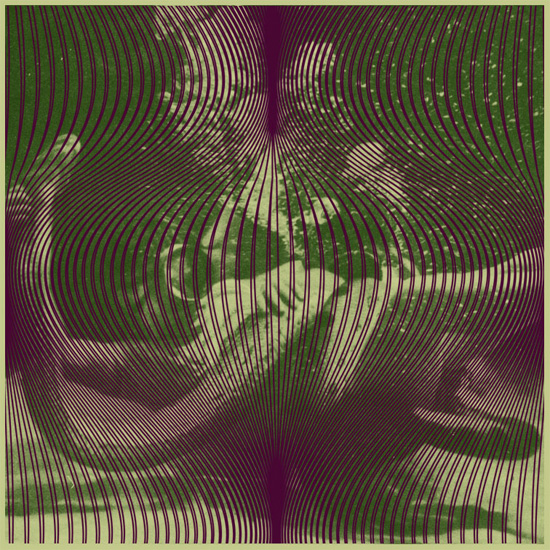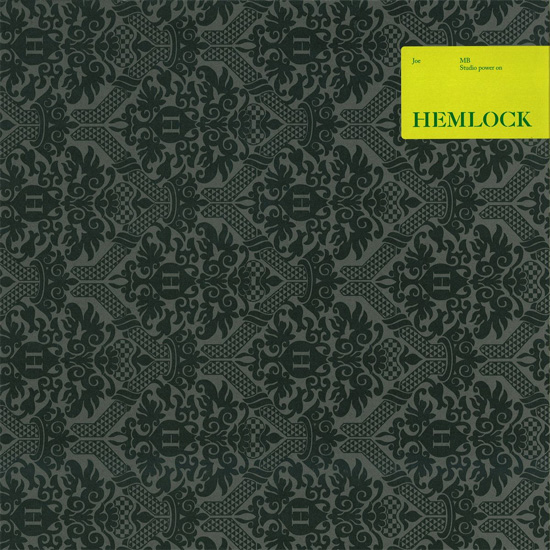Madteo – TTTree Low G. Tapes: Mad Dip Revue [Trilogy Tapes]

Marshall McLuhan’s iconic phrase "the medium is the message" fits here, too – Mad Dip Revue‘s mode of delivery makes a statement about the music it contains, which is cluttered with hiss, audio detritus and artefacts left over from its defiantly low-key, old-school, collage approach. Madteo operates where hip-hop methodologies – crate digging for old records to provide source material, cutting, pasting and looping; occasional appearances by MC Sensational – bleed into uneasy four-to-the-floor throb, suggesting some worn to the bone variety of techno. Here, they’re turned into 20-odd minutes of brooding and often near-ambient house music whose basslines mumble and thrash distractedly.
Aaron Dilloway & Jason Lescalleet – Grapes & Snakes
(PAN)
Lee Gamble – Diversions 1994-1996
(PAN)

Aaron Dilloway & Jason Lescalleet’s new LP Grapes & Snakes, for example, is equal parts meditative and jarring, occasionally tearing without warning into screaming high frequencies or hacking coughs. The soft pulses and filter runs that course through the 20-minute A-side flirt with your own biological rhythms, producing a bodily engaging form of ambient music that beckons you to dance as much as it threatens to sweep you away in the slipstream. The B-side is harsher and a little like what you might imagine live urban infrastructure to sound like, were you to crack the city’s surface: an ever-present rumble of fuzz in the background, creaks and echoes from darkened corners, the hum and crackle of electricity in junction boxes along a Tube line.

Although largely beatless, the resulting music burbles and splashes, stained various colours by E’d up whoops and dessicated hardcore riffs. The rush of cymbals and struck metal percussion opening the B-side suggests the steppers’ momentum of jungle; later, a thrilling minute finds diced breaks and ping-ponging sub-bass bubbling upward through the mix. It’s a hauntological document, in a manner of speaking – the text accompanying the release makes explicit references to the role of memory here, as did V/Vm’s James Kirby in the manifesto accompanying The Death of Rave ("featuring all of the hits and many misses from the golden age of the Northern UK rave scene"). But where Kirby’s work was suffused with melancholy, directly addressing the loss of the promise and collective identity of the pre-1994 rave scene, Gamble lacks such a clear agenda. There’s a love and respect for his source material here, but it’s not tainted by overt sadness for the fact that it’s been lost to the past. The clue’s in the title, Diversions 1994-1996, suggesting that this record is very much a personal document, a means of looking back at a music and culture that completely took over Gamble’s life for an all-too-brief period of time.
Mark Fell – Sentielle Objectif Actualité
(Editions Mego)

Blawan – His He She & She EP
(Hinge Finger)

His He She & She EP works because he abandons completely any residual concerns for the listener’s welfare. The four tracks on here are utterly unforgiving, stomping slabs that don’t build and drop, so much as lurch into view and lumber brutishly for the duration. Basslines, if they exist at all, land somewhere between anguished scream and predatory snarl; percussion clatters away in the gloom as if trapped inside a tiny wooden box; a mess of distortion courses through the core, mashing everything down into an indistinct, pulsating mess. Sometimes he tears so viciously into the music’s fabric that only spare threads are left to hold things together. The experience is coarse, one-dimensional, thoroughly unpleasant – all the things which make it so peculiarly irresistible.
It helps, too, that Blawan’s got a mean ear for a hook, and a knack for using it to disguise the grubbiness of the music surrounding him. At least two of the four tracks on His He She & She are built around snatches of rapped dialogue from The Fugees’ 1996 single ‘How Many Mics’, lending them a slithery, earwormy quality. It’s not exactly often you find yourself humming warehouse techno tracks hours, or even days, after you first heard them blasting from a sound system – though both ‘His Money’ and YouTube sensation ‘Why They Hide Their Bodies Under My Garage’ (whose voice is slurred to that of a malignant drunkard, stood a few paces away from you at a bus stop in the early hours, issuing sinister threats from inside a can of Kestrel) are liable to lodge in the mind for weeks on end.
Hizatron & Bashley – Discharge EP
(Wigflex)

Discharge is no exception, except that Bashley’s presence appears to have imposed at least some modicum of control over Hizatron’s tendency to flip straight from idea to idea. So these tracks have a sort of narrative sense, even if that only means ‘establish a groove and pound listeners with it for nearly ten minutes’. ‘Discharge’ is grotesque and brilliant, like James Holden’s ‘The Sky Is Pink’ remix force-fed carbs and steroids until its biceps and pectoral muscles rip outward like John Hurt’s chest in Alien; ‘Baggah Peeds’ is practically all sub-bass, save traces of clickety click percussion, placemarkers that just about manage to hold the unruly beast in check. Of course, their sullen refusal to pander to anyone else’s idea of ‘techno’ or ‘bass music’ – plus their sheer, bloody minded rudeness – may well be sadly destined to scare off DJs (perhaps rightly) terrified of what they might do to their clean floors. "No hats no hoods chaps, come along now."
Mary Boyoi – Zooz EP
(Sud Electronic)

That the music itself is wall-to-wall great is unsurprising – this is Sud – but further sweetens the deal. Boyoi’s original is as bizarre as it is infectious: a towering, house-tinged, synthetic string-driven pop song. It sets up a central theme and repeats throughout its length, with Boyoi’s vocals chasing strings wildly up and down the register. Panoramabar resident and long-term Sud family member Tama Sumo retains the original’s buoyant energy by dicing its chords into tiny fragments and scattering them across the track’s surface. But it’s Sud co-head Portable that delivers the decisive blow. His remix leaves only trace elements of the original intact, instead stretching it outward into a carnival of multi-layered, syncopated percussion, which crumbles to dust in its final minute.
Bass Clef – ‘Dawn Chorus Pedal’/’You Don’t Know Don’t Know You’
(Idle Hands)

Joe – ‘MB’/’Studio Power On’
(Hemlock)

Cut Hands – Black Mamba EP
(Blackest Ever Black)

‘Black Mamba’ picks up where 2011 debut Afro Noise left off: in a barrage of drums that rain downward with all the unstoppable force of a tropical storm. When I interviewed him last year, he spoke of using unpredictability as a tool to bamboozle the nervous system into a trance state; true to form, minute twists and slippages in rhythm make it tough to track its next move, though there’s a serpentine grace to the entire composition that matches its given name. B-side ‘Krokodilo Theme’, meanwhile, is a remarkable move for a man better known for writing tracks called things like ‘Wriggle Like A Fucking Eel’ and ‘I’m Coming Up Your Ass’, and one of the only things Bennett’s ever done that could legitimately be described as ‘beautiful’. A beatless wash whose piercing string dissonance recalls the work of the BBC Radiophonic Workshop pioneers, it’s the calm in the title track’s destructive wake, and at only four minutes it’s tantalisingly short.



